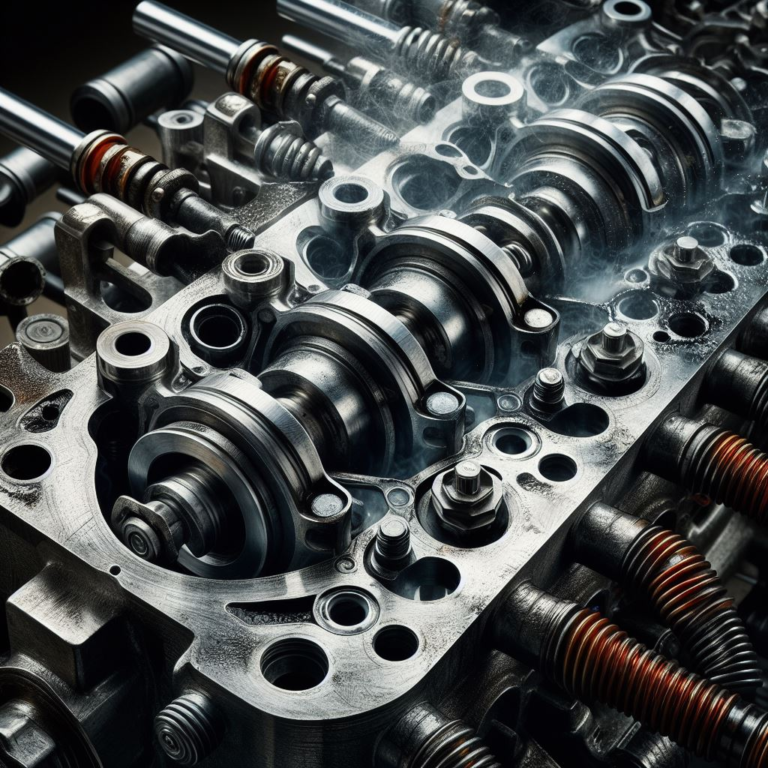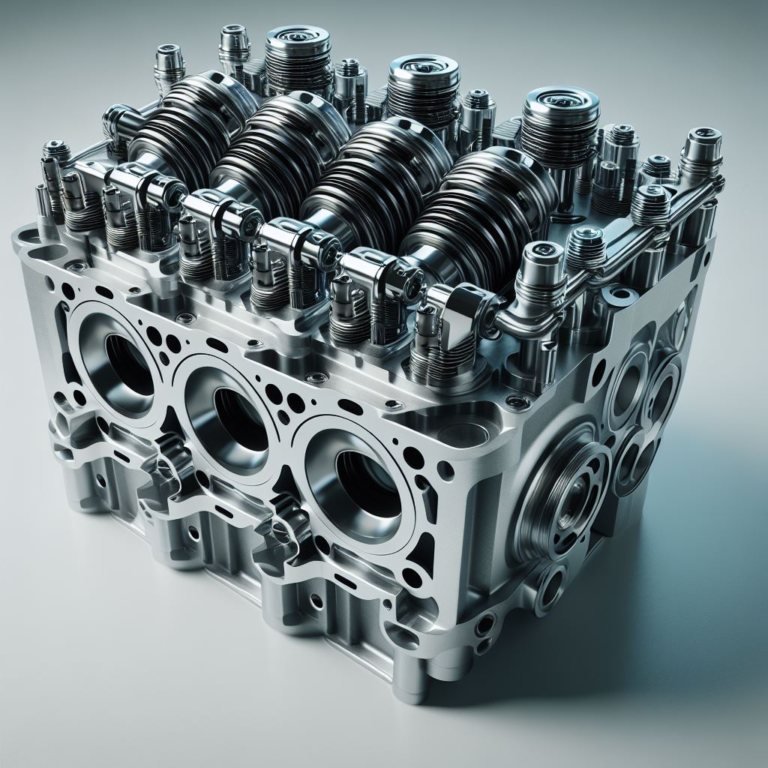Cylinder Heads:
Table of Contents
ToggleCylinder heads are among the most important components in vehicle engineering. Understanding the complex workings of cylinder heads is essential for unlocking maximum power and efficiency, whether you’re driving a car or riding a motorcycle. This tutorial will go into the details of cylinder heads, including their purpose, components, maintenance, and performance increases.

What are Cylinder Heads?
Cylinder heads are crucial components positioned near the top of the engine block. They seal the combustion chamber and contain essential parts such as valves, valve springs, and spark plugs. They function as a lid, ensuring appropriate compression and combustion within the engine.

Components of Cylinder Heads
Inside the cylinder heads, there are a variety of components that work together to help the engine run smoothly. Valves govern the passage of air and fuel into the combustion chamber, and valve springs ensure that they close tightly. Valve seats offer a sealing surface, while combustion chambers optimize the air-fuel mixture for effective combustion.
Valves: Valves are one of the most critical components of cylinder heads. They regulate the flow of air and fuel into the combustion chamber and the expulsion of exhaust gases after combustion. In a typical engine, there are two types of valves:
- Intake Valve: Opens to allow the air-fuel mixture to enter the combustion chamber during the intake stroke.
- Exhaust Valve: Opens to allow exhaust gases to exit the combustion chamber during the exhaust stroke.
Valve Springs: Valve springs are responsible for ensuring that the valves close tightly after each cycle. They exert force on the valves, keeping them sealed against the valve seats to prevent leakage of gases during compression and combustion.
Valve Seats: Valve seats provide a sealing surface for the valves to rest against when closed. They ensure a tight seal, preventing the escape of combustion gases and maintaining compression within the combustion chamber.
Combustion Chamber: The combustion chamber is the space within the cylinder head where the air-fuel mixture is ignited and burned. It is designed to optimize combustion efficiency by providing the right shape and volume for proper mixing and ignition.
Spark Plugs: Spark plugs are located within the combustion chamber and are responsible for igniting the air-fuel mixture. They produce a high-voltage spark that ignites the mixture at the correct time, initiating the combustion process.
Cylinder Head Gasket: The cylinder head gasket seals the joint between the cylinder head and the engine block. It prevents leaks of coolant, oil, and combustion gases between the two components, maintaining the integrity of the engine’s combustion chamber.
Camshaft: In overhead camshaft (OHC) or dual overhead camshaft (DOHC) engines, the camshaft(s) are housed within the cylinder head. The camshaft controls the opening and closing of the valves via cam lobes and is synchronized with the crankshaft to ensure proper timing.
Rocker Arms and Lifters: In engines with overhead valve (OHV) configurations, rocker arms and lifters transmit the motion from the camshaft to the valves. They act as intermediaries between the camshaft and the valves, opening and closing them as needed.

Function of Cylinder Heads
Cylinder heads play a major role in the four-stroke engine cycle, including intake, compression, combustion, and exhaust. During the intake stroke, both air and fuel enter the combustion chamber. The compression stroke compresses the mixture, followed by ignition and burning. Finally, exhaust gases are released during the exhaust stroke. Proper sealing and cooling are required for optimal engine performance.
Types of Cylinder Heads
There are various types of cylinder heads, each with its own design and performance characteristics. Overhead valve (OHV), overhead camshaft (OHC), and dual overhead camshaft (DOHC) are common variants. OHV designs are simpler and more compact, while OHC and DOHC configurations offer improved performance and efficiency.

Cylinder Head Maintenance
To ensure longevity and performance, cylinder heads must be maintained on a regular basis. This includes performing routine checks, adjusting valves, and testing the cooling system. To avoid additional damage, any signs of cylinder head problems, including as leaks, overheating, or lack of compression, should be fixed as quickly as possible.
To Know more about Cylinder Head Maintenance:

Cylinder Heads in Performance Engines
For enthusiasts looking to increase power and torque, changing or altering cylinder heads is a common alternative. Porting, polishing, and valve improvements are all performance changes that can greatly boost engine performance. Aftermarket cylinder heads provide a variety of alternatives customized to individual performance objectives and vehicle requirements.
Conclusion
Cylinder heads are the unsung heroes of automobile and motorbike engines, quietly performing critical functions in the background. By understanding their purpose, components, and maintenance requirements, enthusiasts can guarantee that their vehicles perform optimally. Whether you’re a seasoned mechanic or a curious hobbyist, unlocking the potential of cylinder heads offers up a world of engine optimization and performance possibilities.

You actually make it appear really easy together with your presentation however
I find this matter to be actually something that I feel I’d by no means understand.
It kind of feels too complicated and very extensive for me.
I am having a look forward for your next post, I’ll attempt to get the hang of it!
Najlepsze escape roomy